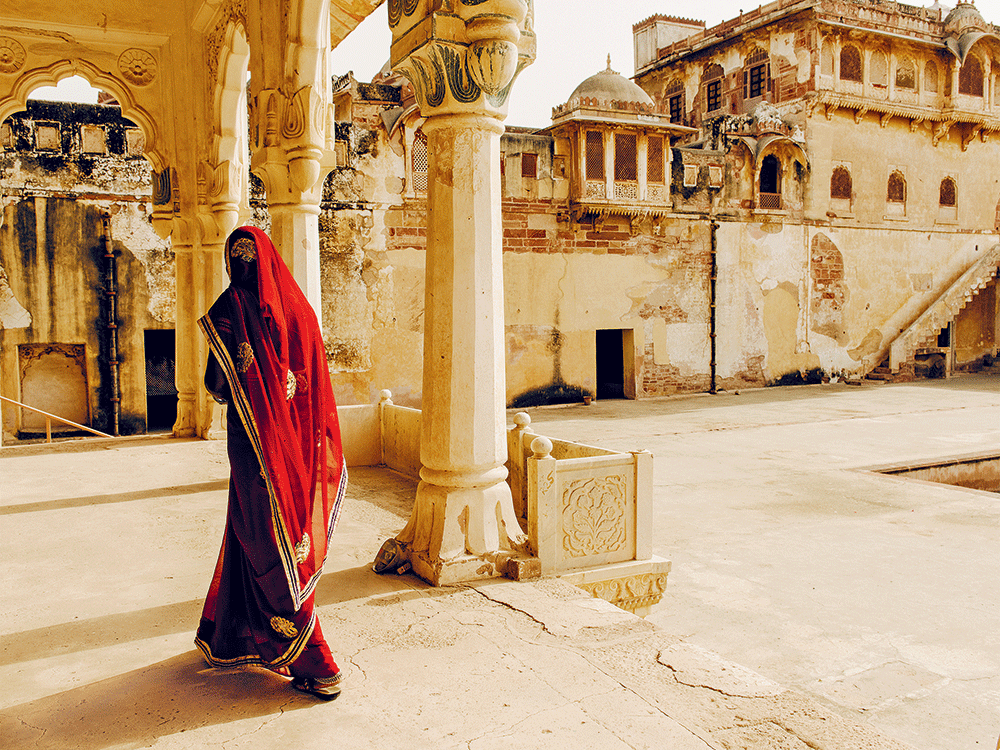
Behind India’s Palace Doors: Meeting the Maharaja
The Maharaja of Jodhpur has kept me waiting. Fifteen minutes have passed since our appointed meeting time in Umaid Bhawan, his sandstone palace. With its elaborate dome rising above the city of Jodhpur, in northwest India’s Rajasthan region, it looks like the country’s version of Sacré-Coeur.
The office where I wait is panelled in dark wood, its furniture about 70 years out of date. A man whose job seems to be shuffling papers, one sheet at a time, nods a greeting. A matronly secretary steps out to offer me tea. I decline, but she returns 10 minutes later to offer again. This time, I accept.
Later, the man shuffles by again with another page and glances at the skin of milk forming in my cup. “Your tea is getting cold, madam,” he says. A fan clicks overhead. At precisely one hour past our appointed time, the secretary returns. It’s just that His Highness is so busy, you see.
The Maharaja of Jodhpur has stood me up.
I can’t quite say I’m surprised. The maharaja is merely acting like a monarch. That, after all, is what the maharajas once were: kings of the many small states that made up India. Even after Britain colonized the subcontinent, many of the royals retained their lands and influence in exchange for collaborating with the imperial government. Independence, in 1947, and the democracy that ensued were supposed to turn these former royals into ordinary citizens.
Of course, it wasn’t that simple. New laws may have diminished the riches of India’s royal families, but the vestiges of generations of privilege and authority remain. That’s especially true in Rajasthan, where princely culture survived the longest and the land is dotted with palaces that are still occupied by families with regal roots. I wanted to understand the role of these families in present-day India and see how they navigate modern life while still embodying the old system, so I set out to traverse the region. It’s not hard to find these erstwhile monarchs—in an effort to hold on to their palaces, many have turned them into hotels.
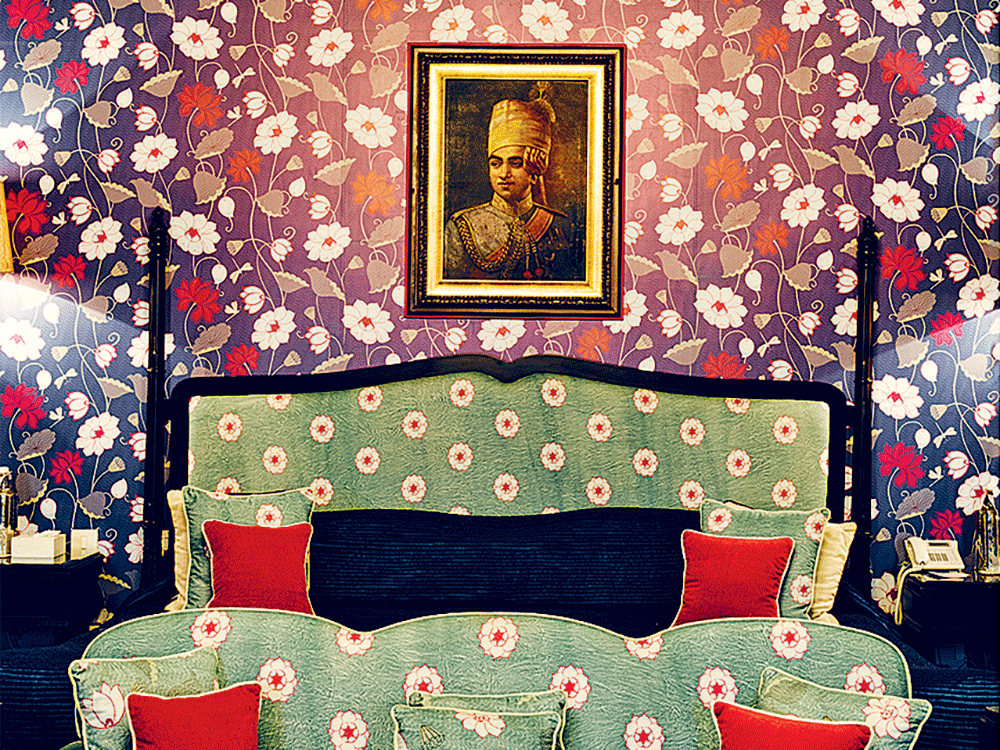
Behind India’s Palace Doors: A New Hotel Trend
Ten days before my botched meeting with the Maharaja of Jodhpur, I explained my mission to Sayar Singh, the man in a starched blue shirt charged with driving me around Rajasthan. He betrayed no emotion, but I interpreted his lack of response as mild disapproval. Or maybe that was my anxiety: I was uncomfortable with the idea of having a driver. Uncomfortable, that is, until we pulled into the melee of cars, motorbikes, trucks, buses, goats, pedestrians, camel carts and dogs on the highway in Rajasthan.
It took us seven bone-rattling hours, but we finally turned the car sharply into the hushed driveway of our first stop: Raj Niwas, in the district of Dholpur. The palace was a veritable museum, a preserve of anglophiliac nostalgia complete with a liveried doorman. The furniture was dark and heavily carved, the worn carpets were silk, and every inch of the walls that wasn’t adorned with Ionic columns was hung with paintings of regal men in turbans. Built in 1876 by a family that had been given Dholpur as a fiefdom, Raj Niwas was developed to house Britain’s Prince Albert on his first visit to India. His hosts wanted him to feel at home, which is why they designed the parlour ceiling to match the one at Buckingham Palace.
“Everyone who has a structure like this wants to preserve it,” said Dushyant Singh, the estate’s current owner. “That wouldn’t have been possible without tourism.”
A stocky, fast-talking man in his 40s, Dushyant is, in his own words, “a hotel professional.” But he’s also the scion of the local ruling family, the son of Rajasthan’s chief minister and a politician himself—a characteristic that became increasingly obvious as he began to extol Dholpur’s attractions. “We’re convenient to Delhi and to the Taj Mahal,” he said. “But we have excellent wildlife close by. Guests come here for a quiet spot to relax. Have you seen our reviews on TripAdvisor?”
Dushyant wasn’t sentimental for the past. He had grown up in the palace—room No. 6 was his childhood bedroom—but he professed no discomfort at having strangers in his home. In fact, he had built a restaurant and modern cabanas in the palace garden in order to increase the number of guests the hotel could accommodate. Confident, with at least one eye firmly on the bottom line, Dushyant didn’t act like royalty; he acted like a venture capitalist.
Check out this countdown of the world’s most luxurious and expensive hotels.
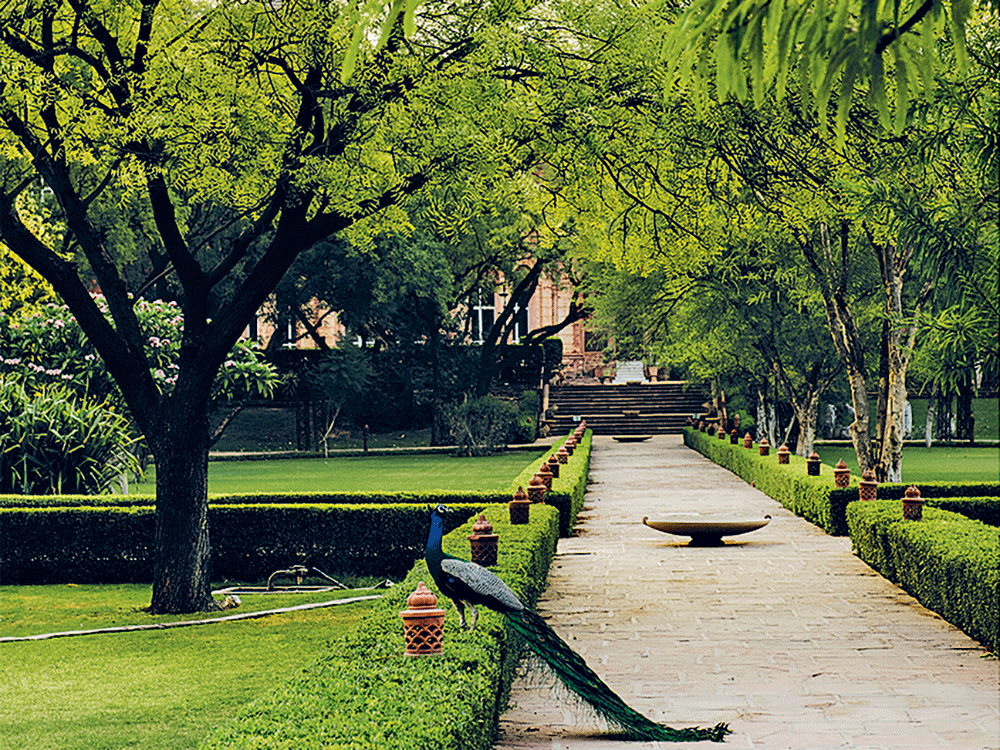
Behind India’s Palace Doors: Vestiges of the Power and Privilege
My next stop, Prithvi Vilas, was located seven hours away and was more homestay than hotel. Maharaj Rana Chandrajit Singh and his wife, Ira—he looking like Clark Kent, she resplendent in an emerald-green sari—waited in the doorway to greet me with a necklace of marigolds and a glass of juice. They graciously showed me my room, an enormous chamber containing a rose petal–filled bathtub, then invited me for gin and tonics in a faded sitting room that looked like it was sinking beneath the weight of its Edwardian furniture and gilt-edged family photos. Every few minutes, a member of the serving staff in a paramilitary uniform brought us snacks.
Chandrajit, a.k.a. the Maharaja of Jhalawar, showed me around. Leopards, tigers, gazelles, a boar—all skinned, stuffed and looking quite displeased—filled the hallways. I counted 10 complete porcelain tea sets in the dining room. In the living room, Chandrajit picked up a silver inkwell, strangely shaped. “This is from my grandfather’s favourite polo pony,” he said. “When it died, he had its hoof plated.”
In most homes, an ink-bearing, silver-plated hoof would be the pièce de résistance of knick-knacks. But Chandrajit had one more thing to show me. He motioned to a corner table topped with a black-and-white photograph of a man with an aquiline nose. Something about the man looked familiar, so I walked over to read the inscription. “To my good friend,” it read. “With warm regards, Benito Mussolini.”
The family left politics when, in 1967, Chandrajit’s grandfather died young of a heart attack induced, they believe, by the stress of it all. But the royal scion exercises power in other ways, helping a teacher find a position in town, say, or aiding a couple whose marriage has gone sour. This is how it used to be, the maharaja handling matters large and small for his people. Some residents “miss the earlier times,” Chandrajit said, “when there was a ruler to hear the problems of the public.”
Signs of those earlier times still filled Prithvi Vilas. Shelves of books, trunks crammed with photographs, cupboards packed with several generations’ worth of linens: the past encroached like kudzu swallowing a tree. But in the morning, when it came time to leave, Ira pulled me onto the sofa and whipped out her iPad. She swiped briskly through a series of photographs of modern rooms, all clean lines and sleek furniture. “It’s our apartment in Delhi,” she whispered urgently, as if trying to convince me—or herself—that she and her husband really were of this age.
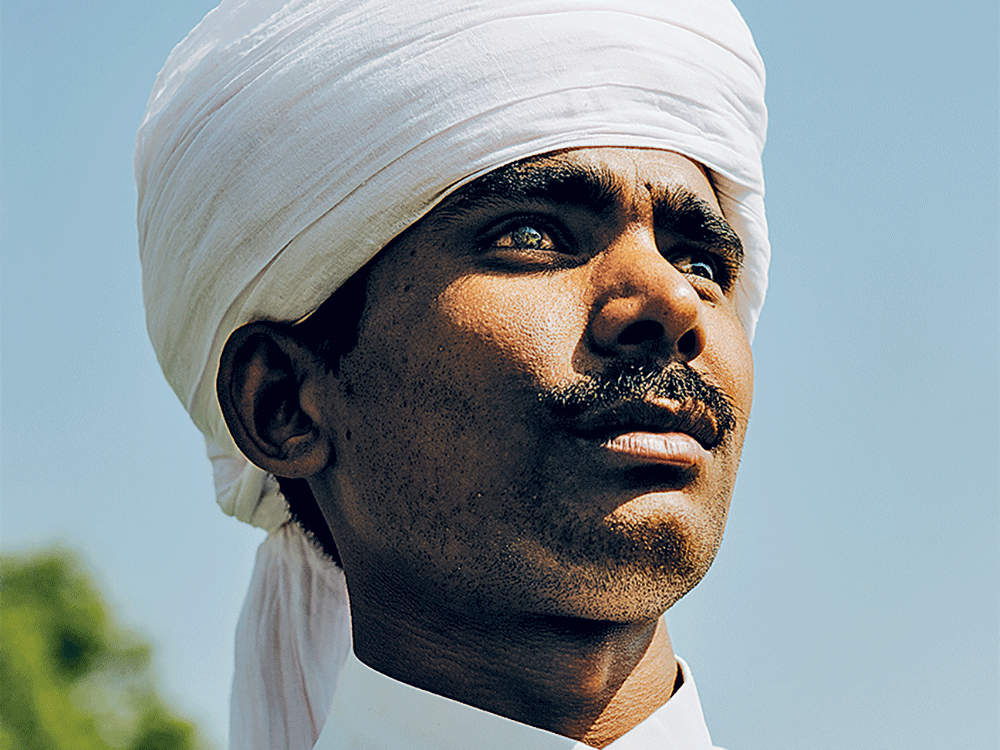
Behind India’s Palace Doors: Roots Run Deep
As Sayar and I continued driving through towns, villages and desert, we talked about the Maharaja of Jodhpur. Actually, the man I’d failed to meet was all anybody in Rajasthan seemed to discuss, because his son’s wife had recently given birth to a baby boy. In 2005, the son had suffered a brain injury in a polo accident and had yet to fully recover, so the birth represented not only a near-miraculous continuation of the family line but also triumph over tragedy. “He doesn’t have any authority, does he?” I asked. “I mean, he’s not the maharaja anymore. Why does everyone treat him like he’s still a king?” A smile played across Sayar’s lips. “Heredity, madam,” he said. “Here, heredity is stronger than any constitution.”
The nearly two kilometres of ramparts we passed as we entered Ranvas Nagaur, a palatial hotel within a fortress, imparted a degree of grandeur I hadn’t encountered yet. A gracious manager showed me around, and we popped into a ground-floor room. It held three beds done up in red brocade and a flat-screen TV. “This is where the maharaja stays,” the manager said. There he was again: the Maharaja of Jodhpur. His hotel company owns and runs Ranvas. My residual annoyance at being ditched faded as I walked through an archway adorned with marvellous frescoes and into the uninhabited part of the palace.
Make that palaces. Ranvas is actually a 38-acre complex, part hotel and part museum, where guests can book a stay at one of 10 havelis (or mansions) which, in another time, would have housed a queen. Each haveli has three to five rooms. The museum includes the evocatively named Palace of Mirrors and Palace of Lanterns, the latter of which houses upwards of 500 oil lamps. During the day, the museum complex is open to the paying public, but after 5 p.m., only hotel guests are allowed on the premises. Having arrived during the scorching off-season, with the exception of a guide, I had the place to myself.
The fort, which has roots as far back as the fourth century, was one of northern India’s first Muslim strongholds, but it’s rife with the keyhole arches and inlaid floors that characterize Mughal architecture. My guide pointed to an especially fine fresco of girls dancing in the monsoon rain. “Muslim artisans painted the geometric designs and Hindu ones the figures,” he said. “Everybody did what they were best at.” He took me up to the roof, where the sun was carmine over the town below and the sandstone ramparts glowed hypnotically. The guide interrupted my reverie. “And to think, this would have been lost without the Maharaja of Jodhpur.”
Want more foreign adventure? Check out these 10 Tourist Attractions to Visit Before You Die.
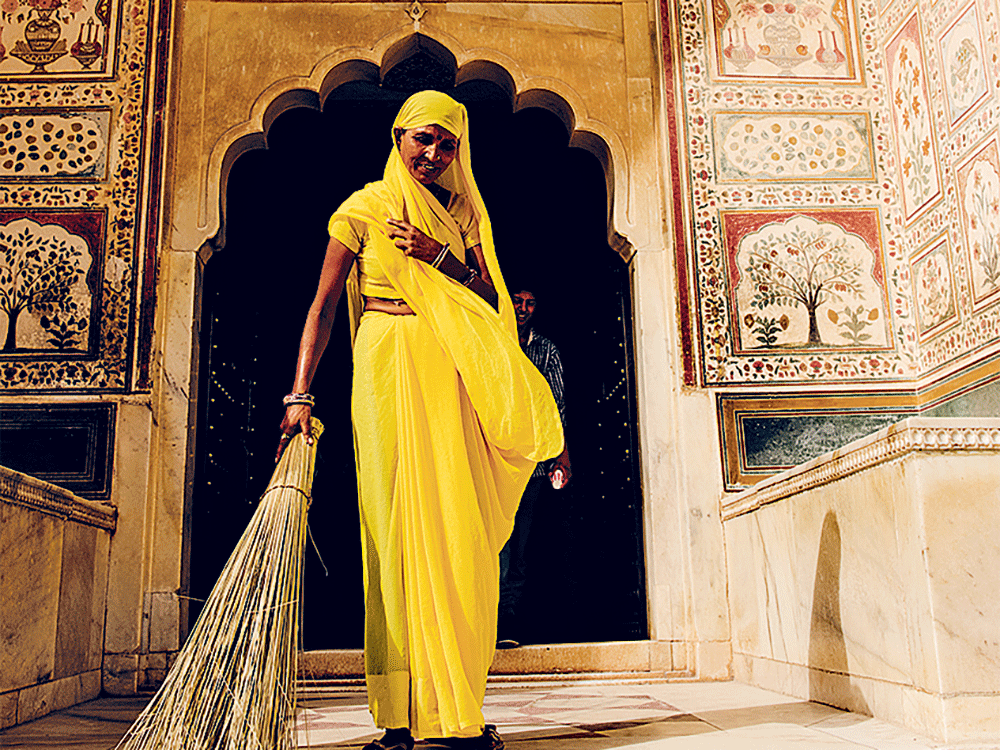
Behind India’s Palace Doors: Past, Present and Future Entwined
Despite his stern demeanour, even Sayar seemed pleased with our last stop. Located on a rural road surrounded by fields outside of Jaipur, The Farm is not a palace at all. The young couple who own it, Surya and Ritu Singh, belong to the noble class. Surya’s father’s estate was submerged, literally, when the state built a hydroelectric dam nearby. His father saved all the furniture he could, put it in storage and bought a piece of land with the compensation he received. Surya and Ritu feel an attachment and responsibility to their heritage, but they’re also artists (they build installations using reclaimed scrap material) who embrace the creative power of change. And so they took that land, built cottages for guests and furnished them with pieces the elder Singh had saved.
At The Farm, an old wagon has become a settee in the poolside dining area, and it isn’t uncommon to see a Dodge steering wheel functioning as a towel rack in your room. There are wedding albums filled with family photos in the downstairs library, but they’re one of the few signs of the past left intact; everything else has been reimagined.
“Some friends who own palaces, they can’t keep them up; they’re crumbling,” said Surya. “We get to start from scratch and put the puzzle back together the way we want.”
Ritu and Surya are in their 30s, and in addition to The Farm, they run an experimental restaurant called Wolf in Jaipur. There, local chefs moonlight alongside the resident chef week to week to create innovative menus. “We know plenty of people who are still stuck in the past,” Ritu says. “They believe the Raj will come back. Even women I went to school with, the ones who were well-educated and wore jeans, they come back, put on their chiffon saris and become the maharaja’s wife. Times have to change; it’s important to speak to your culture, but you should also make use of the education you’ve been provided with.”
But change never happens in a straight line. Democracy and modern-day consumer capitalism were everywhere in India, except where they weren’t. Privilege and effort, heredity and ability, past and future were entangled in ways I couldn’t begin to understand. All I’d seen in those lovely estates was a glimpse of the knot.
2016 by Lisa Abend. “In Rajasthan’s Palaces-Turned-Hotels You Can Sleep Like a King,” Afar (September-October 2016). afar.com